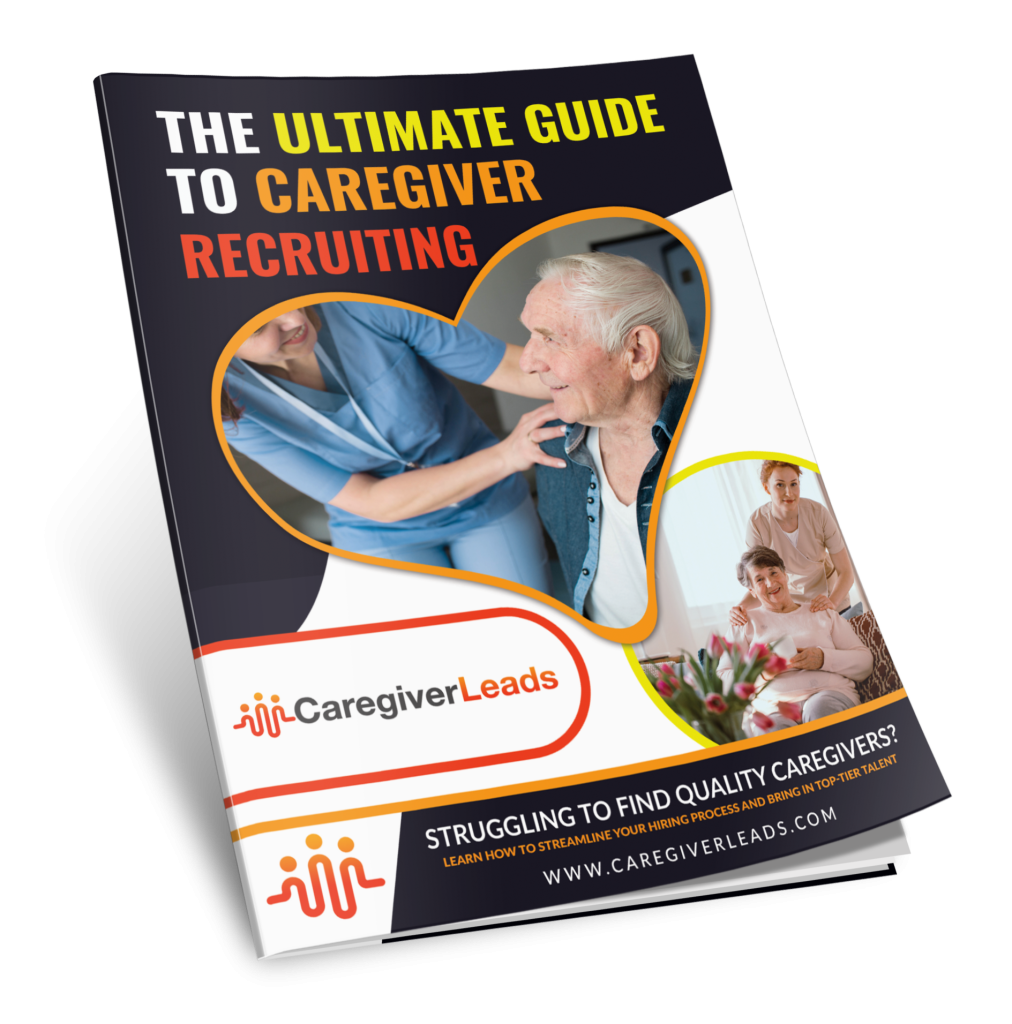Recruiters often face the frustrating challenge of no-show interviews, where scheduled applicants fail to attend. These missed appointments waste valuable time, slow down hiring processes, and impact team productivity. For organizations looking to hire skilled caregivers or employees in other high-demand roles, no-show interviews can be particularly costly.
Finding skilled candidates shouldn’t need attending crowded job fairs, spending excessive hours on low-quality leads, or relying on traditional methods that deliver minimal results. While in-person hiring events may seem useful, they often result in poor turnout, weak follow-up, and candidates who aren’t fully committed. By adopting smarter recruitment strategies and using tools like caregiver leads, organizations can reach more qualified applicants, manage leads effectively, and reduce wasted time from missed interviews.
This blog explores the reasons behind no-show interviews, strategies to prevent them, and how using caregiver leads can improve your recruitment outcomes.
Why Applicants Miss Scheduled Interviews
Understanding why candidates fail to show up is the first step in addressing the issue. No-show interviews can happen for many reasons:
- Lack of genuine interest: Some applicants accept interviews without a real intent to attend.
- Scheduling conflicts: Busy schedules, family obligations, or transportation issues can prevent attendance.
- Poor communication: If candidates aren’t reminded or given clear instructions, they may forget or be unsure how to attend.
- Multiple applications: Candidates applying to several organizations may focus on other opportunities.
For positions such as caregiving, where reliability and skill are critical, missed interviews can disrupt staffing plans, reduce the quality of care, and increase recruiters’ workload. Identifying the underlying causes allows organizations to design better strategies that reduce no-shows.
Focus on a Strong Recruiting Strategy First
The first step in reducing no-show interviews is developing a strong recruiting strategy. A strong strategy ensures that applicants who schedule interviews are genuinely interested and qualified.
Key components of an effective recruiting strategy include:
- Targeted outreach: Focus your efforts on candidates who fit the job requirements and are more likely to attend interviews. This includes reaching out to professional networks, caregiver communities, or local organizations.
- Pre-screening candidates: Use initial screening questions or short assessments to filter applicants early in the process. This ensures that only serious and qualified candidates move forward.
- Transparent job descriptions: Clearly communicate responsibilities, schedules, and expectations to attract candidates who understand and are prepared for the role.
By targeting candidates strategically, organizations can increase attendance rates and improve the quality of hires.
Using Automated Messages to Maintain Candidate Engagement
Automated messaging is a practical and efficient way to keep candidates engaged and reduce the likelihood of no-shows. When applicants feel informed and valued, they are more likely to attend scheduled interviews.
Effective automated messages can include:
- Interview confirmations: Send a confirmation message immediately after the interview is scheduled, including the date, time, and location.
- Reminder notifications: Send reminders a day before or a few hours before the interview.
- Pre-interview instructions: Include directions, parking details, and required documents so candidates are prepared.
- Follow-up messages: Confirm the candidate’s intent to attend and answer any questions before the interview.
Automated messages save recruiters time and increase applicant accountability, ensuring that interviews are more productive and that fewer candidates fail to appear.
Simplifying the Interview Scheduling Process
Complex scheduling procedures can discourage candidates and lead to no-shows. Making the process simple and convenient encourages applicants to attend.
Strategies to simplify interview scheduling include:
- Flexible time slots: Offer candidates many options to fit their schedules. Flexibility increases the likelihood of attendance.
- Centralized scheduling tools: Using a single platform to manage interview appointments helps recruiters stay organized and reduces errors.
- Clear communication: Provide confirmation emails and instructions to cut down confusion.
- Easy rescheduling options: Allow candidates to reschedule with minimal friction if conflicts arise, rather than skipping the interview entirely.
Simplifying scheduling demonstrates respect for the candidate’s time and can dramatically reduce missed interviews.
Pre-Interview Engagement to Encourage Attendance
Beyond scheduling and reminders, engaging candidates before the interview helps them feel connected to the organization and committed to attending.
Methods for pre-interview engagement include:
- Providing role information: Share resources about the job, team, or organization to increase interest.
- Personalized messages: A brief call or email from the recruiter can create a sense of accountability and connection.
- Highlighting benefits: Communicate perks such as flexible schedules, professional development opportunities, or other incentives to attend.
- Tracking engagement patterns: Monitor which candidates respond to communications and adjust your approach to improve attendance rates.
Pre-interview engagement increases the likelihood that candidates will show up and helps build a positive candidate experience.
Leveraging Caregiver Leads to Reduce No-Shows
Caregiver leads are pre-qualified applicants actively seeking caregiver roles. Integrating these leads into your hiring strategy provides access to candidates who are more likely to attend interviews and are already motivated.
Benefits of using caregiver leads include:
- Access to qualified candidates: Reduces time spent on screening unqualified applicants.
- Higher attendance rates: Candidates sourced through leads are more likely to be interested in the position.
- Streamlined recruitment: Leads can be managed efficiently, reducing wasted time on missed interviews.
- Consistent applicant pipeline: Maintains a steady flow of candidates, even during periods of high demand.
By using caregiver leads, organizations can improve hiring efficiency, reduce recruitment costs, and ensure positions are filled with skilled and reliable candidates.
Additional Tips to Minimize No-Show Interviews
Here are extra strategies to prevent no-shows and improve recruitment efficiency:
- Set expectations early: Inform candidates about the importance of attending interviews and the impact of missed appointments.
- Follow-up promptly: Send reminders and confirmations consistently to maintain engagement.
- Use multiple communication channels: Combine email, text, and phone messages to reach candidates effectively.
- Collect feedback: Learn from candidates who miss interviews to identify patterns and improve processes.
- Build relationships: Engage candidates from the start, making them feel part of the organization before the interview.
Implementing these practices ensures a more reliable recruitment process with fewer wasted resources.
Make Every Interview Count
No-show interviews can significantly slow down recruitment and increase costs. By focusing on the right recruiting strategy, using automated messages to engage candidates, simplifying scheduling, and leveraging caregiver leads, organizations can reduce missed interviews and hire more efficiently.
A structured approach ensures that interviews are scheduled with candidates who are qualified, motivated, and likely to attend, saving time and improving hiring outcomes. Modern strategies not only reduce no-shows but also enhance the candidate experience, helping organizations attract and retain skilled caregivers.
Streamline Recruitment with Caregiver Leads
If your organization wants to reduce no-show interviews and connect with qualified caregivers efficiently, Caregiver Leads can help. Visit www.caregiverleads.com to access tools and strategies that simplify candidate management and improve recruitment results.
FAQs About No-Show Interviews
- What are the main reasons applicants miss scheduled interviews?
Applicants may forget, face scheduling conflicts, or accept interviews without real interest in the role.
- How can automated messages reduce no-show rates?
Automated confirmations, reminders, and pre-interview instructions keep candidates engaged and accountable.
- Why is a strong recruiting strategy important for reducing no-shows?
A targeted approach ensures that only qualified and interested candidates are scheduled, improving attendance rates.
- How do caregiver leads help in preventing missed interviews?
Caregiver leads provide pre-qualified candidates actively seeking work, increasing attendance and reducing wasted recruiter time.
- Are there additional ways to encourage candidates to attend interviews?
Yes, pre-interview engagement, personalized contact, clear instructions, and highlighting role benefits can motivate applicants to show up.



